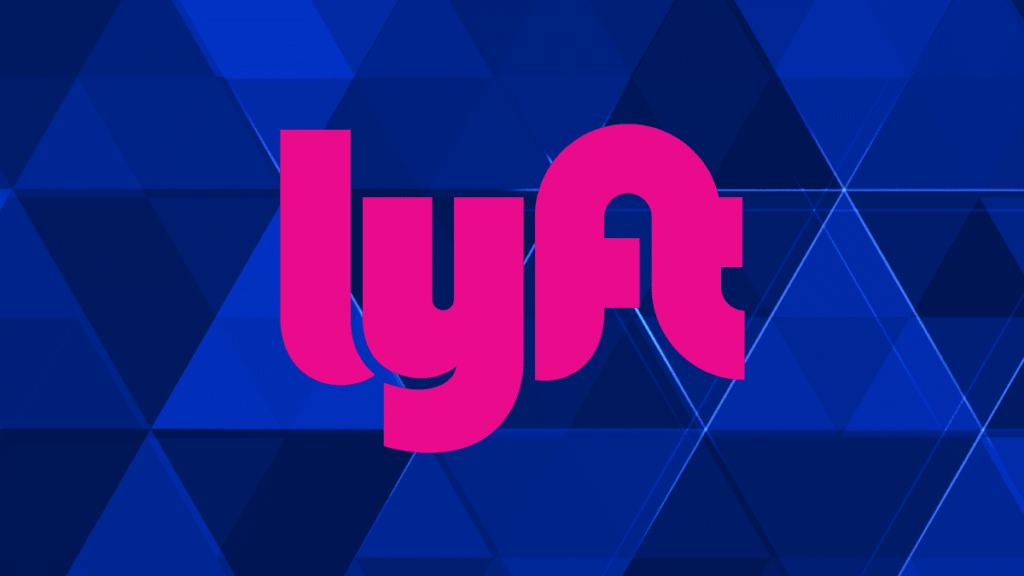
Lyft Inc. (NASDAQ: LYFT), one of the most recognized ride-hailing companies in the United States, recently announced its financial results for the first quarter of fiscal year 2025. The company’s earnings exceeded Wall Street’s expectations, signaling a positive trajectory for the brand. Lyft’s improved financial performance, particularly in terms of profitability and growth in both gross bookings and rider numbers, marks an important milestone for the company. This article will provide an in-depth look at Lyft’s first-quarter results, the factors driving its success, and what the future holds for the ride-hailing giant.
Lyft’s Profitable Quarter: A Closer Look at the Numbers
Revenue and Earnings: An Impressive Turnaround
For the first quarter of fiscal year 2025, Lyft reported a net income of $2.57 million, or $0.01 per share. In contrast, the company posted a net loss of $31.5 million, or $0.08 per share, in Q1 FY24. This shift from a loss to a small profit is a major achievement for Lyft, especially considering the challenges the company faced over the past few years, including the intense competition from rival Uber, rising fuel costs, and the global pandemic’s impact on the transportation industry.
Lyft’s revenue for Q1 FY25 was reported at $1.5 billion, which represents a solid 14% increase year-over-year. This growth was driven by an increase in the number of riders, as well as the number of trips completed. The significant rise in gross bookings also contributed to this revenue boost. Gross bookings, which represent the total value of all rides booked through Lyft’s platform, reached $4.2 billion, marking a 13% rise from the same period last year.
This uptick in bookings was particularly noteworthy, as Lyft continues to recover from the dip in demand during the pandemic, which affected ride-hailing businesses worldwide. The company’s ability to generate consistent growth in this area speaks to the resilience of its business model and its ability to adapt to changing market conditions.
Adjusted EBITDA: Reflecting Operational Efficiency
In addition to reporting growth in revenue and bookings, Lyft also saw an improvement in its operational efficiency. The company posted an adjusted EBITDA (earnings before interest, taxes, depreciation, and amortization) of $106.5 million, up from $59.4 million in Q1 FY24. This marked a year-over-year increase of 79%. Adjusted EBITDA is a key metric used by investors to evaluate a company’s profitability and efficiency, as it excludes non-operational expenses and one-time costs. The growth in adjusted EBITDA indicates that Lyft has managed to streamline its operations and improve its margins.
The company’s ability to increase adjusted EBITDA, even as it continues to reinvest in growth initiatives, is a sign of strong management. Lyft’s decision to focus on operational efficiency while driving top-line growth has allowed the company to improve its profitability and reinvest in areas such as technology, customer experience, and driver compensation.
Lyft’s Ride-Hailing Growth: A Record Number of Riders
One of the primary drivers behind Lyft’s strong performance in Q1 FY25 was the significant increase in its rider base. The company saw an uptick in the number of active riders on its platform, with more individuals choosing Lyft for their daily transportation needs. Lyft’s focus on improving the rider experience and enhancing the user interface of its app has likely contributed to this growth.
Lyft’s strategy to prioritize customer satisfaction and offer incentives to both riders and drivers has paid off. With the introduction of features like Lyft Lux, which offers premium rides for passengers looking for a more upscale experience, the company has tapped into a broader demographic of riders. These premium offerings have not only increased bookings but have also helped Lyft differentiate itself from Uber, the dominant player in the ride-hailing industry.
The number of rides completed per day also saw an increase, as Lyft capitalized on the resurgence of urban mobility. Cities across the U.S. have seen a rebound in foot traffic as more people return to in-person activities, including work, dining, and entertainment. Lyft’s ability to capture more of these trips has played a significant role in its financial performance.
Key Drivers of Lyft’s Success: What’s Behind the Numbers?

Increased Demand for Ride-Hailing Services
A major driver behind Lyft’s success in Q1 FY25 was the recovery in demand for ride-hailing services. The COVID-19 pandemic severely impacted Lyft’s business in 2020, as lockdowns and stay-at-home orders limited travel and movement. However, with the easing of restrictions and the widespread distribution of vaccines, people began to return to their normal routines, which included using ride-hailing services for commuting, socializing, and traveling.
In particular, demand for Lyft rides increased in key metropolitan areas, where public transportation remained less reliable or desirable for many people. Lyft’s ability to capitalize on the renewed demand for personal transportation has enabled the company to achieve impressive growth in bookings, rider numbers, and revenue.
Strategic Expansion and Innovation
Lyft’s management has also been focused on driving long-term growth through strategic expansion and innovation. Over the past several quarters, Lyft has invested in a variety of initiatives aimed at improving its product offering, increasing rider retention, and growing its driver base.
For instance, Lyft has continued to expand its partnership with major automakers to enhance its fleet of electric vehicles (EVs). As environmental concerns grow, more passengers and drivers are seeking cleaner alternatives to traditional vehicles. Lyft has committed to integrating a higher percentage of EVs into its fleet in the coming years, which could drive additional growth and differentiate the company in an increasingly competitive market.
The company is also focused on expanding its services beyond traditional ride-hailing. Lyft has been experimenting with new modes of transportation, including electric scooters and bicycles, in several cities across the U.S. This diversification helps the company appeal to a wider range of users and provides additional revenue streams.
Furthermore, Lyft has ramped up efforts to improve the driver experience by offering better compensation, providing flexible working hours, and ensuring that drivers are fairly rewarded for their time and efforts. Lyft has recognized that driver satisfaction is essential to maintaining a high-quality service for riders, and this emphasis on driver relations has been a key factor in the company’s ability to attract and retain a strong workforce.
Share Repurchase Program: Boosting Investor Confidence
In addition to the positive earnings report, Lyft also announced that it had authorized a $750 million share repurchase program, up from the previous $500 million. This move signals the company’s confidence in its financial future and its commitment to returning value to shareholders.
Share repurchase programs are often seen as a way for companies to reinvest in themselves when they believe their stock is undervalued. By buying back shares, Lyft reduces the number of outstanding shares on the market, which can lead to an increase in the value of remaining shares. This move may be viewed favorably by investors, as it demonstrates that the company has sufficient capital to repurchase shares while also investing in its growth initiatives.
The increase in the share repurchase program, coupled with Lyft’s positive financial results, has led to bullish sentiment on Wall Street. Analysts have raised their price targets for Lyft stock, with some recommending it as a “Buy” based on the company’s solid performance and growth potential.
Competitive Landscape: Lyft vs. Uber
While Lyft’s Q1 FY25 earnings were impressive, the company still faces significant competition from its main rival, Uber Technologies Inc. (NYSE: UBER). Uber, which operates in more than 60 countries worldwide, remains the dominant player in the global ride-hailing market. Despite Lyft’s recent success, Uber’s scale and international presence make it a formidable competitor.
However, Lyft has managed to carve out a niche for itself in the U.S. market, focusing on providing a high-quality experience for riders and drivers. Lyft has also made strides in differentiating itself from Uber by emphasizing its commitment to sustainability, community, and innovation. Lyft’s ability to position itself as a more “localized” alternative to Uber in the U.S. has resonated with many consumers who prefer a more regionally-focused ride-hailing company.
Additionally, Lyft’s foray into other transportation options, such as bike-sharing and electric scooters, gives it a competitive edge by offering a broader range of services. As ride-hailing becomes more integrated into urban mobility solutions, Lyft’s investment in a diversified transportation portfolio could help it capture more market share.
Looking Ahead: Lyft’s Future Prospects
Lyft’s strong performance in Q1 FY25 puts the company on a positive path, but several challenges remain. The competitive landscape in the ride-hailing industry is fierce, and Lyft must continue to innovate to stay ahead of its rivals. The company will need to maintain its growth trajectory in rider numbers, expand its presence in more cities, and increase its market share in the electric vehicle space.
Investors and analysts will be closely watching Lyft’s performance in the coming quarters to assess whether the company can sustain its profitability and growth. If Lyft continues to execute its strategy effectively, it could become a more formidable player in the transportation sector, not just in the U.S., but globally.
Lyft’s ability to diversify its services, enhance its technology, and improve the rider and driver experience will be key to its long-term success. Moreover, with its focus on sustainability and green technology, Lyft is well-positioned to capitalize on the growing demand for environmentally friendly transportation solutions.
Conclusion: Lyft’s Path to Sustained Success
In conclusion, Lyft’s Q1 FY25 earnings report paints an optimistic picture for the company’s future. The company’s strong revenue growth, improving profitability, and increasing rider numbers reflect its ability to adapt to changing market conditions and capitalize on new opportunities. With a solid foundation in place, Lyft is poised to continue its upward trajectory, although the competitive pressures from Uber and other players in the market cannot be ignored.
As Lyft moves forward, its ability to balance growth with operational efficiency, innovate within the transportation space, and expand into new markets will be critical to sustaining its momentum. For investors, Lyft presents a compelling story of recovery and growth, making it a stock to watch closely in the months and years to come.

